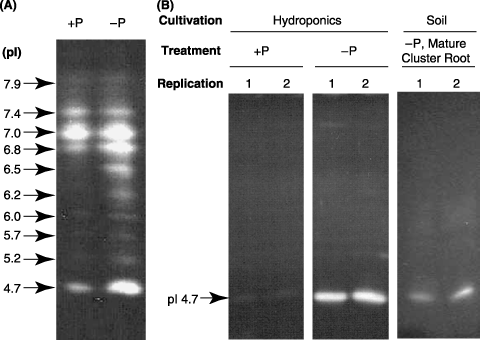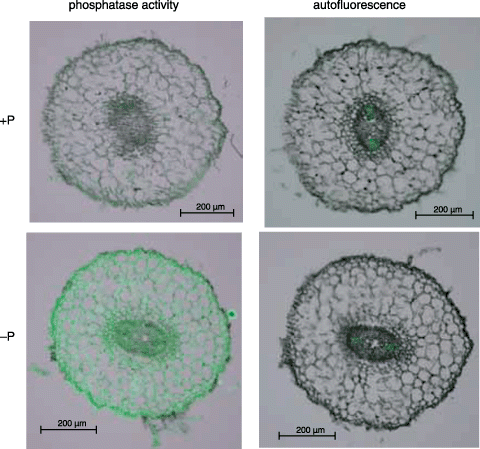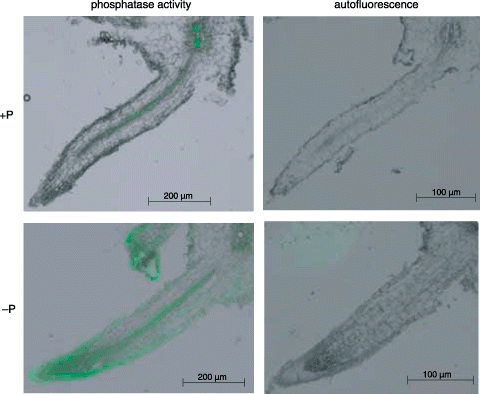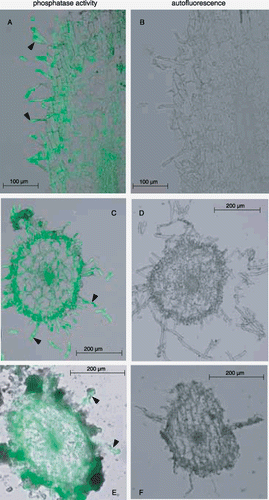Figures & data
Figure 1 Activity staining of APase separated by isoelectric focusing. (A) Profile of APase isoforms in crude protein extracted from roots of hydroponically cultured white lupin. (B) Profile of secreted crude protein from roots of hydroponically cultured white lupin and extracted protein of rhizosphere cluster roots cultured in soil. pI, xxxx.

Figure 2 Visualization of the histochemical activity of APase for normal roots using ELF97 phosphate as a substrate. Hydroponically cultured white lupin roots were used for this experiment. Fluorescent precipitates of ELF97 (green color), the product of phosphatase activities, were observed using a fluorescence microscope. The results of the activity staining and autofluorescence are shown in the left and right panels, respectively. Upper and lower panels indicate the transverse sections of normal roots under +P and –P conditions, respectively.

Figure 3 Visualization of the histochemical activity of APase for cluster rootlets using ELF97 phosphate as a substrate. Hydroponically cultured white lupin roots were used for this experiment. The results of the activity staining and autofluorescence are shown in the left and right panels, respectively. Upper and lower panels indicate the cluster rootlets formed under +P and –P conditions, respectively.

Figure 4 Visualization of the histochemical activity of APase for cluster rootlets formed under –P conditions using ELF97 phosphate as a substrate. Hydroponically and soil-cultured white lupin roots were used for this experiment. The results of the activity staining and autofluorescence are shown in the left (A,C,E) and right (B,D,F) panels, respectively. (A,B) Vertical sections of a cluster rootlet in a hydroponic plant; (C,D) transverse sections of a cluster rootlet in a hydroponic plant; (E,F) transverse sections of a cluster rootlet in a soil culture plant. Triangles indicate typical root hairs.
